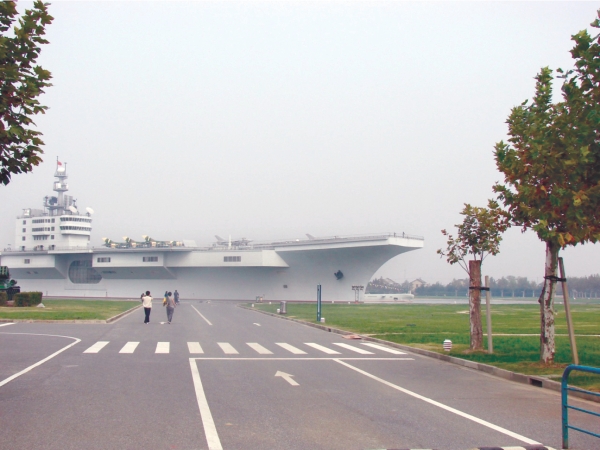| Home - Back Issues - The Team - Contact Us |
 |
| Volume 10 |Issue 32 | August 19, 2011 | |
|
|
Neighbours
A Test for President Aquino Amando Doronila China has launched its first aircraft carrier, signalling its growing naval power that's likely to increase tensions between Beijing and smaller Asian maritime states, including the Philippines, over territorial claims on islands in the West Philippine Sea (South China Sea). The 67,000-ton, 302-meter warship sailed from its home port, Dalian, in northeastern China on Wednesday to start its sea trials, amid a show of force in the disputed sea by the US Navy and the expected arrival shortly of the biggest warship of the Philippine Navy, the Hamilton class, World War II-vintage Coast Guard cutter. The cutter, recently purchased from the United States and renamed BRP Gregorio del Pilar, is on its way from California to join the Philippine Navy as its flagship. It is a puny vessel compared to the Chinese carrier, but Philippine Navy officials have said the ship would be used, among other purposes, to defend the country's maritime interests in waters near the disputed Spratly Islands. Navy officials said the ship would be deployed to patrol near the Palawan area where the Philippines has established outposts and planted its flag to underscore its sovereignty following intrusions of Chinese vessels over the past five months. The United States showed its concern with the visit last week of the USS Ronald Reagan aircraft carrier in Hong Kong for a four-day port call, three days after the voyage of the Chinese carrier. The port call is more likely to impress the Chinese of the US naval presence in the West Philippine Sea. Sovereignty issues The stalled peace negotiations between the government and the MILF came to a head two weeks ago when President Aquino secretly met Murad Ebrahim, chair of the MILF, in Tokyo in an initiative to restart the stalled talks. The Tokyo meeting has dumped into the hands of Aquino two national sovereignty issues-the territorial dispute with China over the Spratly Islands and the enforcement of Manila's authority over its national territory against secessionist demand. After the meeting, the MILF demanded the establishment of a Muslim "substate" in Mindanao as a condition for the withdrawal of its early demand for a separate state. This new demand appeared to be an ultimatum poised on the head of the Manila government. The demand sounded like it was a take-it-or-leave-it ultimatum to agree to the MILF's scaled down proposal. Test for Aquino The launch of the Chinese aircraft carrier has cast a dark shadow on the ability of the administration to effectively carry out in the near term its strong remonstrance that it would never cede any inch of Philippine territory to counter claims by neighbours on the disputed territories. The start of the sea trials of the Chinese aircraft carrier is believed by China watchers to be a sign of its burgeoning naval power. The International Herald Tribune (IHT) quoted Xinhua, the state-run Chinese news agency, as saying that the launch was "a highly symbolic step in what is certain to be a multiyear effort to create a carrier presence in the Pacific waters off its coast.” Scientific research Ukraine later stripped the ship of its weapons and engines and put it up for sale. A Chinese company bought the Varyag for US$20 million, ostensibly to turn into a floating casino. Work to retrofit the ship started in Dalian in 2004. The Chinese defence ministry said last month that the carrier would be used largely for scientific research and training. According to the IHT, foreign analysts said it could be a decade or more before the Chinese can deploy and operate a fleet of carriers, the most costly and complex weapons system in any nation's arsenal. "The launch is nonetheless a highly significant moment for China's fast-growing military," the report said. Long march A Chinese defence ministry spokesperson said last month the vessel did not alter China's stated policy that its armed forces were wholly defensive in nature and that the ship had "nothing to do" with China's disputes with neighbouring countries over its claim to most of the West Philippine Sea. But the IHT said "a fleet of carriers would nevertheless bolster the Navy's already overwhelming military advantage over the Navies of China's smaller neighbours.” Accept reality "It will not pose a threat to other countries and other countries should accept and be used to the reality that we are developing the carrier." Chinese nationalists were less diplomatic, according to the Financial Times. Quoting an online discussion forum, the newspaper reported reactions that said: "China is the world's next superpower. It's just that we don't admit that to the outside world!" This article was first published in the Philippine Daily Inquirer. Copyright (R) thedailystar.net 2011 |
